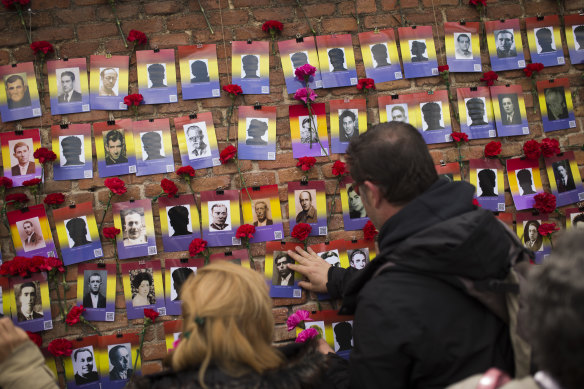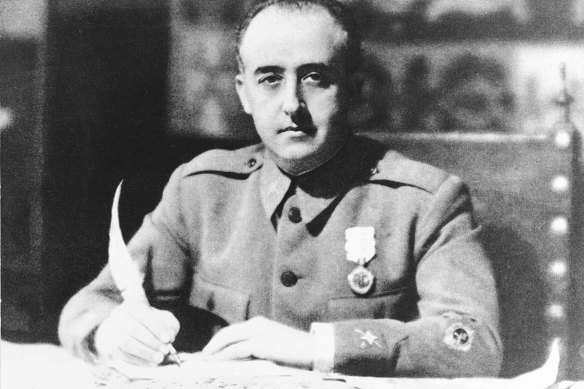
Barcelona, Spain: Spanish government researchers said on Sunday they had identified 357 foreign fighters who went missing during the Spanish Civil War (1936-1939), the conflict that foreshadowed World War II.
Researchers confirmed the names of 212 fighters from Germany, Austria and the Netherlands, according to a statement from the government on Sunday. Some 102 are of German origin, 70 Austrian and 40 Dutch. It gave no information on how many people of other nationalities had been identified.

People put red carnations next to photographs during the 87th Spanish Republic anniversary ceremony to pay tribute to people killed in the Spanish Civil War at the Almudena cemetery in Madrid.Credit: AP
The identified combatants fought within the International Brigades, military units set up by the Communist International to fight against General Francisco Franco’s fascist forces. Some 40,000 foreign men and women joined up as volunteers, fighting alongside the forces of the democratic Second Spanish Republic and against the rise of fascism in Europe in the late 1930s.
The findings are based on a year of research in records held in documentary archives in Spain and Russia. Researchers combed through the daily lists of casualties and missing soldiers compiled by officers in the International Brigades.
The names of private soldiers were frequently omitted from the lists, making the research process more difficult. These lists are held in the Russian State Archive of Socio-Political History, in Moscow. Researchers also dipped into the main archives on the Spanish Civil War located in Spain.

General Francisco Franco in 1936.Credit: AP
By cross-referencing documents, researchers were also able to identify the likely area where the soldiers died or were badly wounded. It is an important step towards locating their remains inside mass graves scattered across the country.
This research provides “very valuable information that gives us the opportunity to contact the families of the missing combatants and, in the future, to intervene in the mass graves that have been located”, said Alfons Aragoneses, head of the project.
All those identified were part of the Thälmann Brigade, a Communist unit made up largely of anti-Nazi Germans. The battalion was active on the Ebro River front in northeastern Spain between March and September 1938, the site of the longest and deadliest battle of the war.









 Add Category
Add Category